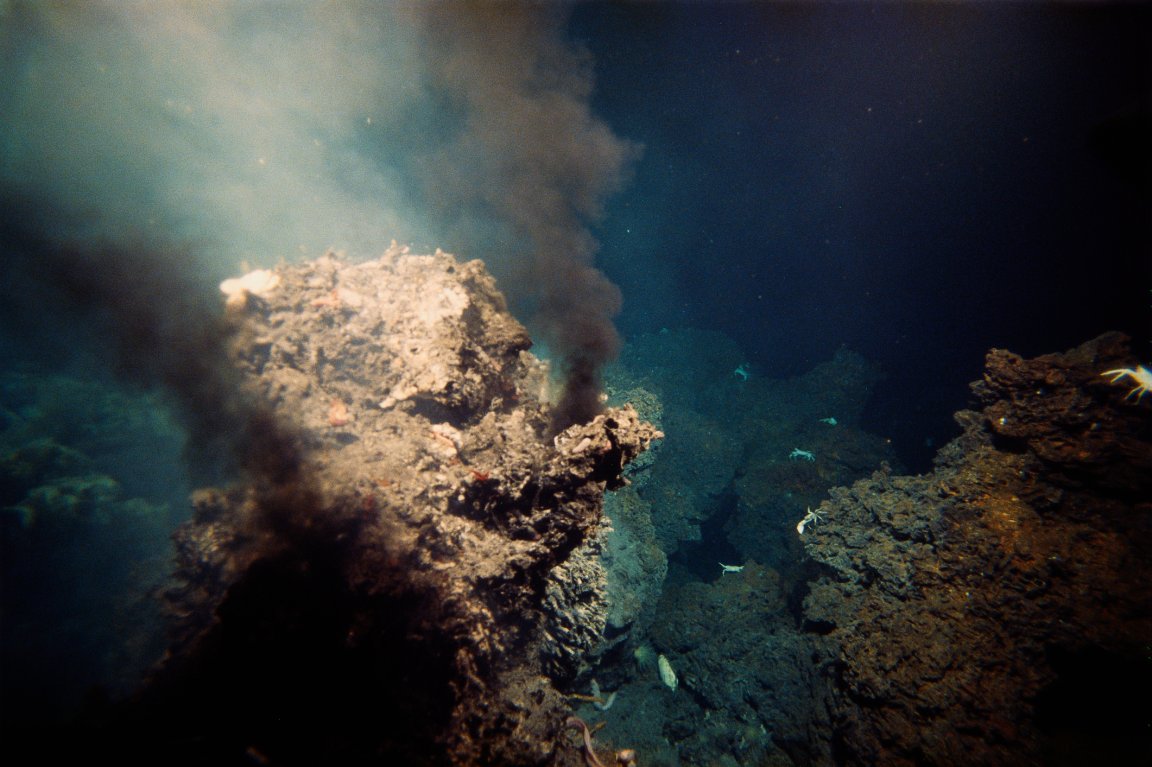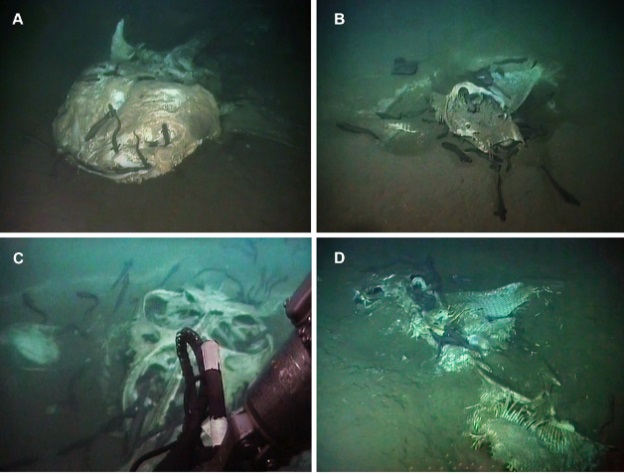
Instead of leaving the dead to rot, humans make funeral arrangements. We hold memorial services. We scope out cemeteries and headstones and buy wooden coffins that really serve one purpose: To preserve the dead. In nature, no such things exist. Once creatures die, they become one with nature, and provide sustenance to other parts of the food chain.
Now, a series of images have capture the moment researchers unearthed a graveyard straight out of a horror movie. Behold: the place where some of the largest and most powerful creatures on Earth go to die.

The grizzly sight was found after the University of Plymouth’s Marine Institute dispatched a remotely-operated vehicle (ROV) into the deep, where it encountered the mostly-skeletal remains of four large marine creatures—including a whale shark and three moublid rays—on the ocean floor.
Each departed creature was surrounded by about 50 scavengers, which were embroiled in a battle to see who could consume the carcasses first. This gave the team an opportunity to see first-hand how the largest and most fearsome creatures are relegated from hunters to the hunted in death. It’s also a great example of how the dead are integrated back into the marine ecosystem.
In fact, whale carcasses themselves are known to be home to complex ecosystems. Within the first few hours of decomposition, the larger scavengers—such as sharks and smaller whale-types—get their fill of the fresh flesh. Then the smaller opportunists—like a variety of shrimp and crabs, called amphipods—join in on the fun. Only when the remains become skeletal does the Osedax (a fancy word for zombie worms) enter the picture.
They feast on the animal’s bones, while their specialized bacteria helps break down any remaining fat.

It’s rather unusual to find a site like this for a number of reasons. First, animals of this size generally don’t make it all the way down to the ocean floor (though we obviously know that they can, and sometimes do).
Secondly, the ones that do make it generally exhibit telltale “whale-fall” attributes. This refers to the dead carcass hosting its own diverse ecosystem—creatures such as crabs, sharks and other shrimp-like amphipods. While they did witness various creatures consuming the dead, those that they expected to find weren’t there (they found a large number of scavenger fish instead).
Regardless, this is an interesting find. Given the fact that these creatures provide more than four percent of the food on the ocean floor. It only seems right that, instead of floating about the ocean for the rest of eternity, in death, they find some semblance of purpose
Read the full paper, “Fish Food in the Deep Sea: Revisiting the Role of Large Food-Falls,” here.